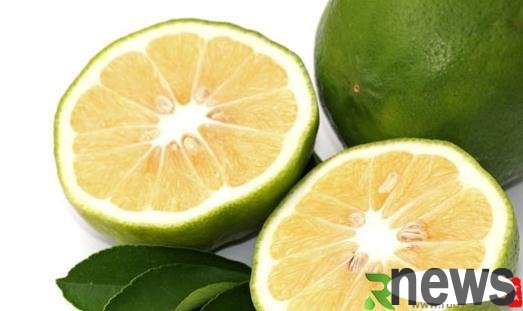Home Cleaning Tips: Tea helps remove dust

Home cleaning tips: Tea helps dust removal
Home cleaning tips: Tea helps dust removal
1. Stains on the surface of white furniture:
The white furniture in the home is easy to get dirty, and it is difficult to wipe away stains with just a rag. You might as well squeeze toothpaste on a clean rag. Just wipe it gently and the stains on the furniture will be removed. But be careful not to use too much force to avoid damaging the paint surface.
2. Cracks appear on floors or wooden furniture:
You can cut the old newspaper into pieces, add an appropriate amount of alum, cook it into a paste with clean water or rice soup, embed it into the crack with a knife, and smooth it. It will be very firm after it is dried. Then apply paint of the same color, and the furniture can restore its original appearance.
3. Corners around the room or joints between carpets and walls:
is the most difficult dead corner to clean, and it is very easy to produce mold and stains. You can try cleaning with an old toothbrush. If you encounter more tenacious dirt, you can use a toothbrush to dip in detergent to remove it, then wipe it clean with water to keep it dry.
4. Cleaning of screen windows:
The screen windows are covered with dust. Most of the time we clean, we remove the screen windows and then clean them with water. Let me tell you a good way to clean the screen without removing it: Wet the used newspaper with a rag, then stick the wet newspaper to the back of the screen, wait for five minutes, remove the newspaper on the screen, and you will find that the damp newspaper is covered with dust stains on the screen.
5. Paste hook:
Although it is quite convenient, it will take a lot of trouble once it is to be removed. At this time, just spread the cotton dipped in vinegar around the hook to allow the vinegar water to penetrate into the tightly sticky gap. After a few minutes, the hook can be easily removed with a flat-head screwdriver. The remaining adhesive can also be wiped with vinegar to remove it.
6. Tea leaves help to remove dust:
Because tea residues can absorb dust, when cleaning the dust and slurry in the room, you can sprinkle some brewed tea leaves first and then clean it with a broom. This will be easier and easier. Remember, wet tea leaves can be better than dry.
7. When wiping the door and window glass:
You can peel and cut the onion into half first, rub the glass with its cut, and quickly wipe it with a dry cloth while the onion juice is not dry yet. This way the wiped glass is clean and bright.
8. Black dirt at the joints of the ceramic tile:
Squeeze an appropriate amount of toothpaste on the brush and brush the tile joints vertically; then apply the candle on the joints, first apply vertically, and then horizontally to make the thickness of the candle the same as the thickness of the ceramic tile, and it will be difficult to get oil stains in the future.
9. Wipe tables and chairs:
Soak a soft cloth in cool thick tea water and use it to scrub tables and chairs and other furniture, which can make the furniture as bright as new.
10. Glass:
First wipe the glass with a damp cloth, then dip a little white wine with a clean damp cloth, and wipe it on the glass with a little force. After rubbing, the glass is clean and bright.
11. Sometimes there are circles of stains on the dining table:
Just sprinkle some salt and add a little salad oil to clean it. Gasoline or turpentine can also be removed, but to avoid depainting on the desktop, it is best to wipe it with salt. If it really cannot be removed, use the above-mentioned detergent.
12. Hot marks on the surface of wooden furniture:
If you place the hot cup plate directly on the furniture, the paint surface will often leave a circle of hot marks. You can use a rag to dip it in alcohol, floral water, iodine or strong tea and gently wipe it on the scalds; or apply a layer of Vaseline oil on the scalds and wipe it with a rag every two days, and the scalds can be removed.
13. Ceramic or enamel ware that has been brewed with tea:
often deposits a layer of brown dirt, which is difficult to wash. If you use a fine cloth, dip it in a small amount of toothpaste and scrub it gently, it will be washed quickly without damaging the porcelain surface. The kitchen walls are often glued with oil smoke and become sticky. Just use the soft part of the bread to erase it, which is easy and easy.
14. Cabinet panel: When cleaning the cabinet panel with embossed decals, the cleaning supplies selected must be thick and soft. Do not use metal steel wool balls to avoid damaging the surface of the cabinet. Therefore, the old cotton T-shirt at home becomes the first place of cleaning products, soft and water-absorbing. When scrubbed, it can cover the concave and convex patterns of embossed patterns. If there are omissions or stubborn stains, and then combined with an old toothbrush to remove stains and paint them for a few times, the cabinet will be completely refreshed.
15. White doors, windows and bed sheets:
can be soaked and rinsed with rice water, which has obvious descaling and decontamination and whitening effects.
16. Dirt on aluminum products such as aluminum pots, aluminum basins, aluminum spoons:
can be applied with vinegar, so that the wiped aluminum products are smooth and shiny without damaging their surface.
17. Pool cleaning: The pool of the cabinet requires both vegetables and dishes, which is easy to contaminate the oil and dirt in the dishwashing water. If there is no special pool cleaner, sprinkle a little salt in the oily area, and then wipe it with waste plastic wrap up and down. After wiping, rinse it with warm water several times, which can also make the pool as bright as new. You can prepare a special small brush or toothbrush for the corners and drainage areas of the pool or wipe them with fine salt, soapy water, and detergent. It is best to soak the water cover in the drainage area in warm soapy water for 20-30 minutes to achieve the ideal decontamination effect.
18. The range hood is the most difficult stove to clean in the kitchen:
First pour out the oil in the oil box, and then soak the oil box in warm water made of soapy water or neutral detergent for about 20 minutes. If the oil is stubborn, it can be soaked for 40 minutes. If there is a small amount of oil stain in the oil net, you can soak it directly in warm water and wash and dry it. If the oil stain is serious, you can soak it with the oil box..
19. Oil stains on the surface of the gas stove:
You can apply the hot soup left after cooking noodles on the surface, wipe it with a cloth after a while, and then rinse it with water; the gas stove is usually cleaned after cooking, and wipe it with a wet cloth with soapy water or soda water when the gas stove is still left. If the gas stove is completely cooled, it will be difficult to wipe it clean. Soak the cleaning cloth in beer for a while, and then wipe the stove with stubborn stains, and it will be as bright as new. In addition, use the remaining radish or cucumber chips, dip them in detergent and rinse them with clean water, which will have a good stain removal effect.
20. Green cleaning of washing machines:
is mainly for rollers and pulsating washing machines' filters. To clean the filter screen of the pulsator washing machine, you only need to take off the filter screen and rinse it clean, but it should be noted that it must be cleaned regularly to be guaranteed; while the drum washing machine is relatively complicated, because we cannot see the dirt hidden between the inner barrel and the outer barrel. You can pour half a bottle to a bottle of edible vinegar into the inner barrel of the washing machine according to the capacity of the washing machine, add warm water to a height of 3/4 of the barrel, soak for 2 to 3 hours, then turn on the washing machine for 10 to 20 minutes, then put off the dirty water and inject clean water, rinse for 10 to 15 minutes and then finish.




